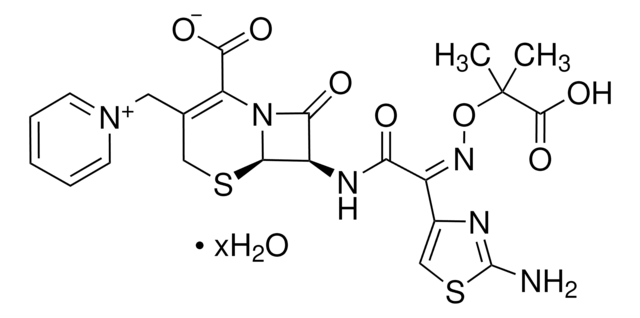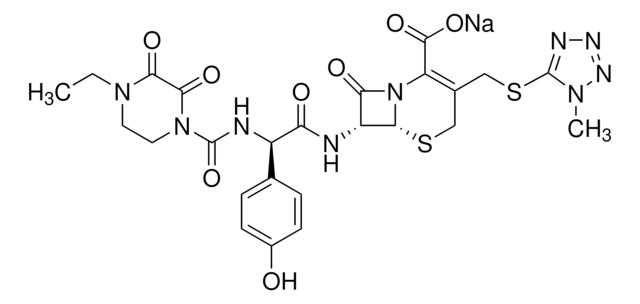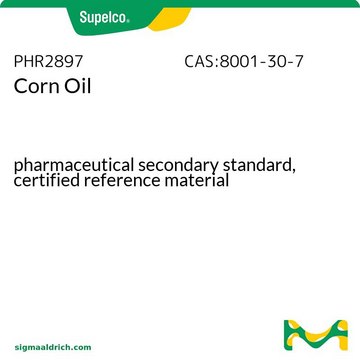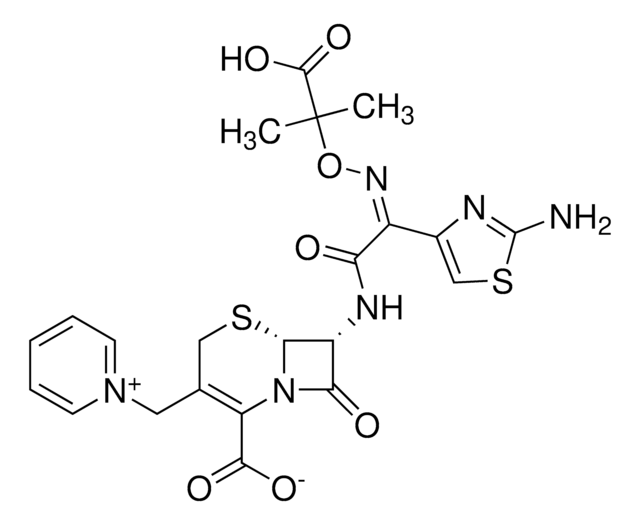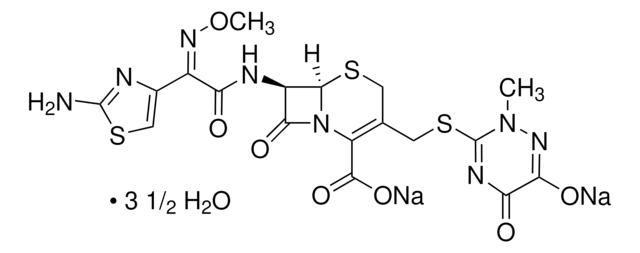C6048
Cefmetazole sodium salt
About This Item
Productos recomendados
Formulario
powder
Nivel de calidad
caducidad
limited shelf life, expiry date on the label
solubilidad
H2O: 50 mg/mL
espectro de actividad antibiótica
Gram-negative bacteria
Gram-positive bacteria
Modo de acción
cell wall synthesis | interferes
temp. de almacenamiento
2-8°C
cadena SMILES
[Na+].[H][C@]12SCC(CSc3nnnn3C)=C(N1C(=O)[C@]2(NC(=O)CSCC#N)OC)C([O-])=O
InChI
1S/C15H17N7O5S3.Na/c1-21-14(18-19-20-21)30-6-8-5-29-13-15(27-2,17-9(23)7-28-4-3-16)12(26)22(13)10(8)11(24)25;/h13H,4-7H2,1-2H3,(H,17,23)(H,24,25);/q;+1/p-1/t13-,15+;/m1./s1
Clave InChI
BITQGIOJQWZUPL-PBCQUBLHSA-M
Descripción general
Aplicación
Acciones bioquímicas o fisiológicas
Envase
Otras notas
Palabra de señalización
Danger
Frases de peligro
Consejos de prudencia
Clasificaciones de peligro
Eye Irrit. 2 - Resp. Sens. 1 - Skin Irrit. 2 - Skin Sens. 1 - STOT SE 3
Órganos de actuación
Respiratory system
Código de clase de almacenamiento
11 - Combustible Solids
Clase de riesgo para el agua (WGK)
WGK 2
Punto de inflamabilidad (°F)
Not applicable
Punto de inflamabilidad (°C)
Not applicable
Elija entre una de las versiones más recientes:
Certificados de análisis (COA)
¿No ve la versión correcta?
Si necesita una versión concreta, puede buscar un certificado específico por el número de lote.
¿Ya tiene este producto?
Encuentre la documentación para los productos que ha comprado recientemente en la Biblioteca de documentos.
Nuestro equipo de científicos tiene experiencia en todas las áreas de investigación: Ciencias de la vida, Ciencia de los materiales, Síntesis química, Cromatografía, Analítica y muchas otras.
Póngase en contacto con el Servicio técnico


